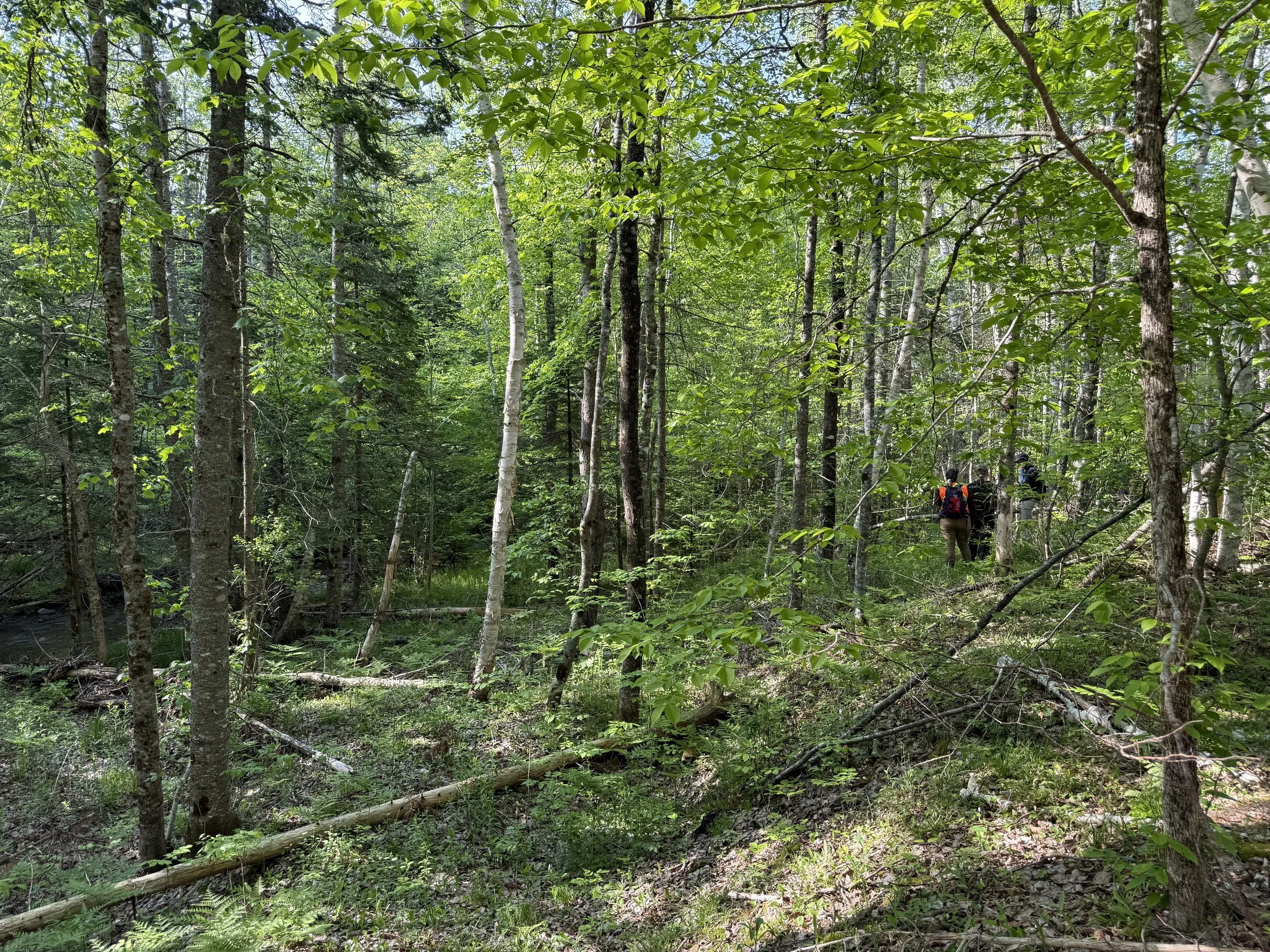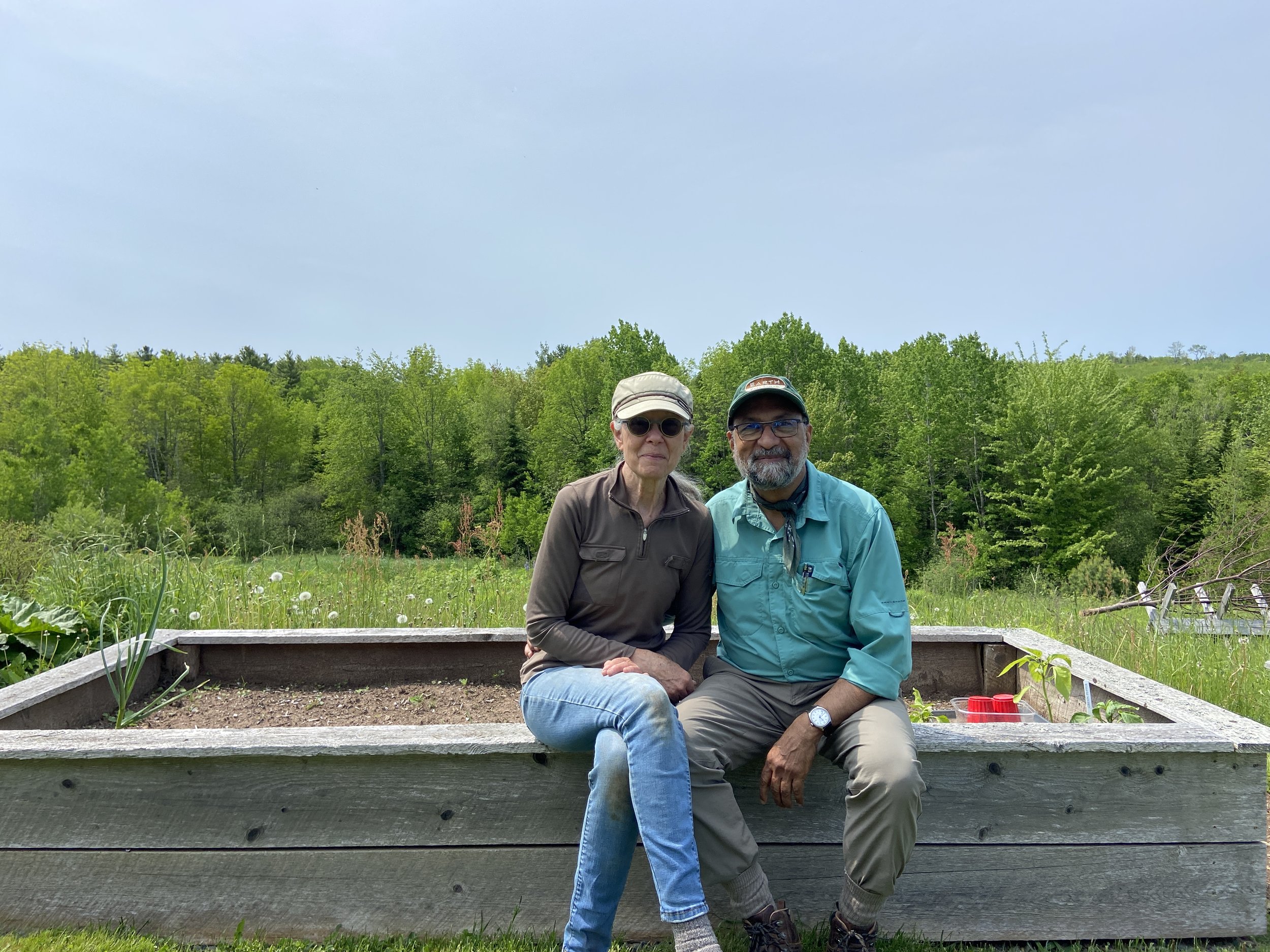Finding Sanctuary in Stewardship: Celes and Susan’s Story
Celes and Susan never saw themselves as land stewards, and it was not something they ever imagined for their future. But when they watched the beautiful woods near their old home in rural Manitoba get bulldozed for development, they began to re-evaluate.
Their one-acre property in Manitoba backed onto a small woodlot with a large meadow just behind it. They would see a wide variety of wildlife, including coyotes, moose, deer, and the occasional bear, as well as herds of migrating elk in the winter.
“It was like a sanctuary; there was so much wildlife around,” says Susan.
“Then the farm in front of us was sold to a developer. The day the bulldozers came and started knocking down those trees, it was a terrible thing to witness. I just had to leave.”
A new way of seeing
It was in that moment that they became aware of the important role landowners play in conservation and the preservation of woodlands, ecosystems and wildlife habitats.
This is especially true in Nova Scotia, where more than 65% of the land is privately owned.
When Celes and Susan decided to move to Nova Scotia, this was one of the most important things on their list of criteria as they looked for a place to settle. If they were going to settle somewhere with woodland nearby, they wanted to own it — so they could protect it and prevent it from being bulldozed or commercially clear-cut.
Pulled east their kids, Celes and Susan eventually landed on an 84-acre woodland just outside Wolfville on South Mountain.
It was more land than they had expected to purchase, and it felt overwhelming at first, but they’ve fallen in love with the property, the woodlands that surround it, and the unique and creative community it is part of.
“We began to notice the patterns and the wildlife here,” says Celes.
“I put trail cams out, we had friends from the Blomidon Naturalist Society come out and core some of the hemlocks, we started to notice the emergence of different tree species at different times of year, and we became familiar with the migratory birds that come back every summer.”
The best part? They now have peace of mind knowing that the forest they look out on every morning is protected.
This wound up being more important than they ever could have imagined. About four years ago, on the other side of the brook (which their property line borders), there was a large patch of woodlands that was clear-cut, leaving a very visible difference in land management strategies between the two patches of forest.
“The contrast is so stark. It’s such an ecologically devastating approach to forest management,” says Susan. “I can’t help but wonder what has happened to all the wildlife that was in that forest before it was razed.”
A partnership in protection
The more time they spent in the woodland and the more they learned about the species at risk that call the woodland home, the more it became vital for them to protect it – not just while they are stewards, but long after that.
“We don't know whether our children will ever settle out here, but it has become more about how we ensure that we, as current stewards, make sure that this is never destroyed,” says Celes.
So, Celes and Susan began exploring organizations to determine what was possible – and that’s when they discovered the Nova Scotia Working Woodlands Trust (NSWWT).
When they started taking those first steps with NSWWT and read the conservation documents, something that jumped out to them was the flexibility of it. There was no “one way” of managing the woodland, and NSWWT was willing to work with them to figure out the best way forward.
“There were a lot of things that began to come together in terms of a good group of people, a good organization, a good implementation tool and viable support,” says Celes. “There’s always been this willingness [from NSWWT] to help us achieve our goals.”
Since they began working with the Trust, Celes and Susan have gained a deeper understanding of the diversity of their beloved woodland. “We’ve gotten to know parts of the land we’ve never even been to, and we’ve gotten really valuable data and maps to go along with that,” says Celes. For example, they recently learned that many of the hemlocks and white pines in their woodland are more than 200 years old, based on increment bores.
“However long we're here, we will continue taking people out on the land to listen and learn from it. The difference is now we have information to share about this land that isn't just personal, it’s also scientifically correct, well-mapped and ecologically illustrative.”
Passing knowledge to the next generation
Some of the most important people Celes and Susan get to take out onto their land are their grandkids. They have been slowly fostering this care and understanding for the woodland by spending time with them outside.
Four years ago, while they were exploring along the river with their grandkids, they discovered a deer carcass.
“It was such an educational opportunity for the kids to talk about this natural thing that happens,” says Susan. “Over time, we would return to this spot and watch the carcass decay.”
Sue and Celes’ grandkids live in the city, so to be able to offer them safe and supportive opportunities to connect with nature is a real gift. This was especially true during the pandemic, when the kids would spend up to three days a week in and around the woods with Celes and Susan.
Celes and Susan also host educational tours and groups on their woodland, partnering with organizations including NSWWT, Nova Scotia Nature Trust and the Blomidon Naturalist Society in order to give people an opportunity to experience the incredible habitats of their forest – the healing qualities of the stream, the power and strength of the old-growth hemlock ravine and the complexity of wildlife that call their woodland home.
“I never imagined we would ever be at this place in our lives,” says Celes.
“We are in a privileged situation to be able to steward this land, and to be able to protect it is really, really important to us. And thanks to NSWWT, that’s been made possible and it hasn’t been an onerous thing.”








